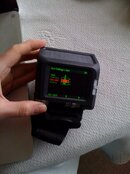Michael Gerhartz
Contributor
I'm still waiting for some last details from Switzerland on which formula they use. I just want to point out, that I tried several scenarios with both imperial and metric settings yesterday and that the difference in the SAC rate was so small, that I am not sure if it was because of the calculation or the physical conditions during the dive.
If someone does not trust the imperical calculation, there is a simple fix:
Switch from Cuft to Litre, then enter the tank size ( not the total air volume it holds at a rated pressure, just the internal volume of the tank, i.e. 11,1 liter for an aluminium 80 ).
After that change the settings back to imperial and you are good to go. The whole process takes less than a minute....Since the metric calculation only need the internal tank volume and the air pressure, this gives you the most accurate reading.
Like I said, I tried several different variations the other day with no significant difference in the SAC rate ( okay, I have to admit that I froze my .... off after the 3rd dive, but that is a different story...)
Knowing for how many other AI computers the manufacturer of Uemis have written the software succesfully, I'm convinced that it works properly. But if someone has some fency numbers coming up on the display, I would certainly like to know about it.
Just for the record this issue would not come up in a metric calculation
this issue would not come up in a metric calculation



Michael
If someone does not trust the imperical calculation, there is a simple fix:
Switch from Cuft to Litre, then enter the tank size ( not the total air volume it holds at a rated pressure, just the internal volume of the tank, i.e. 11,1 liter for an aluminium 80 ).
After that change the settings back to imperial and you are good to go. The whole process takes less than a minute....Since the metric calculation only need the internal tank volume and the air pressure, this gives you the most accurate reading.
Like I said, I tried several different variations the other day with no significant difference in the SAC rate ( okay, I have to admit that I froze my .... off after the 3rd dive, but that is a different story...)
Knowing for how many other AI computers the manufacturer of Uemis have written the software succesfully, I'm convinced that it works properly. But if someone has some fency numbers coming up on the display, I would certainly like to know about it.
Just for the record
Michael





